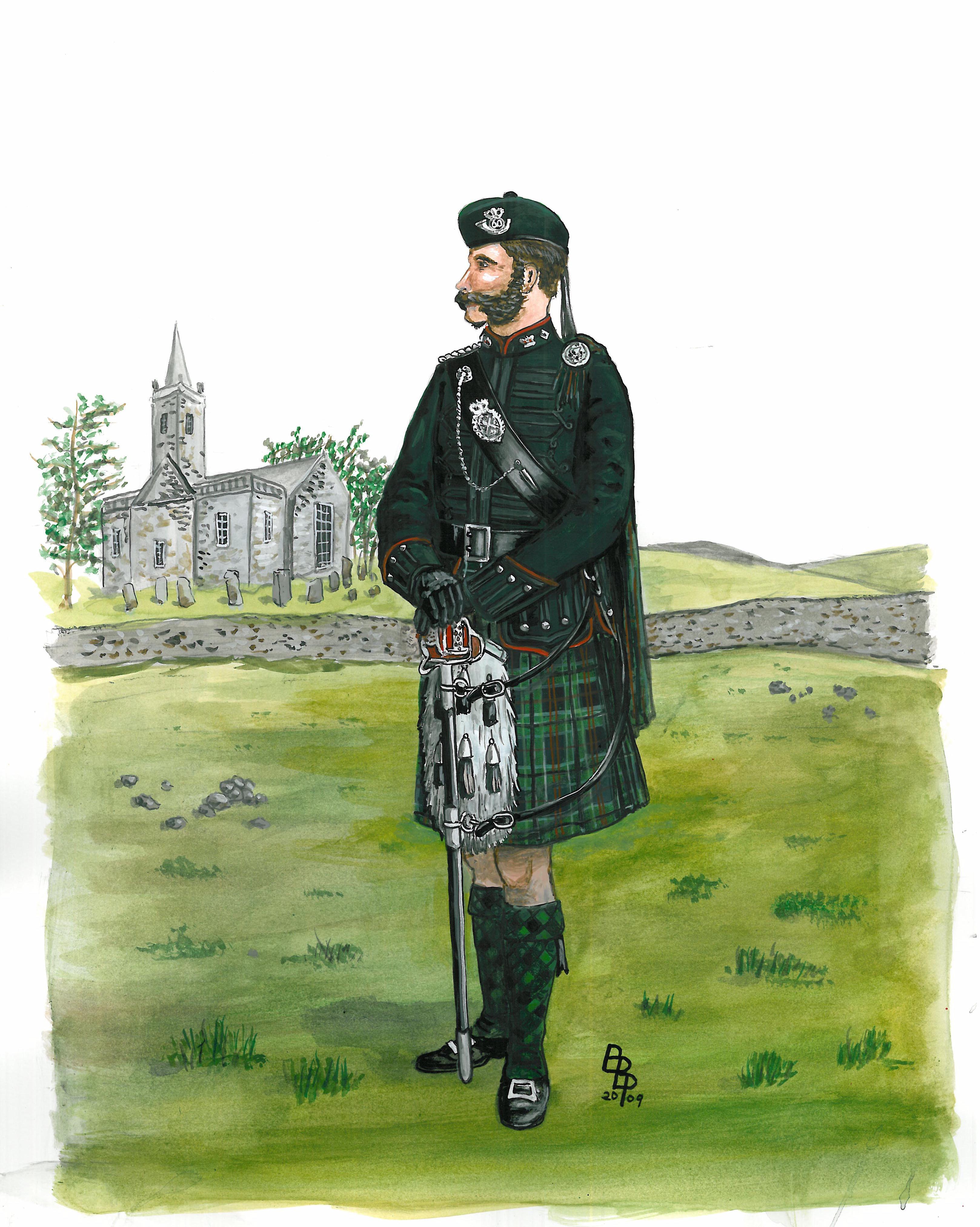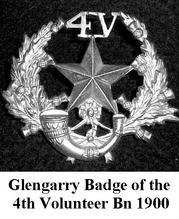GREAT BRITAIN
The 60th Lanarkshire
Rifle Volunteer Corps
Captain
1860
The need to supplement Britain’s regular standing army with some sort of reserve had been brought up many times since the Napoleonic Wars. The Duke of Wellington himself had raised concerns in the late 1840s about the lack of a force to defend Britain with most of her troops overseas. Despite being a recent ally of France in the Crimean War of 1854-5, it was fear of invasion by that nation which encouraged the establishment of a volunteer force. The French victory over Austria in 1859 caused further alarm and even though the raising of Volunteer units had been under way for a couple of years, its pace was accelerated and thousands of Rifle Corps were raised all over England, Scotland and Wales. Organizing these enthusiastic but amateur soldiers presented a headache for the War Office but a system using the Lord Lieutenancies of the various counties under an old act of 1804 finally brought some order. Through various reforms during the next twenty years these Volunteer Rifle Corps were combined into companies, battalions and auxiliary units attached to the regular army. At the end of the century, many of these corps served in the South African War (Boer War) and, after an effective reorganization in 1908 they were well prepared for the coming world war. The Territorial Force, as it was by now known, served its country with valor and sacrifice during the four years of the Great War and although reorganized in the twenties and thirties, it would do so again in the Second World War. Since that conflict the Territorial Army has undergone more amalgamations, cuts and organizational changes than most formations should ever have to but the descendants of the old Rifle Volunteers continue to serve their country to this day in places such as Afghanistan and Iraq.
Our illustration shows a Captain of the 60th Lanarkshire Rifle Volunteer Corps in the year 1860. This unit, along with the 61st and 93rd Corps, was formed from highlanders living in Glasgow and central Lanarkshire. They became “G”, “H” and “I” companies of the 4th Lanarkshire Rifle Volunteers. In 1867 they were combined into the Highland company of the corps and by the Childers reforms of 1881 they were attached to the Cameronians (Scottish Rifles) of the regular army, becoming the 4th Volunteer Battalion in 1887. Some members of the unit served in the Boer War of 1899-1902. Our illustration shows a Captain of the 60th Lanarkshire Rifle Volunteer Corps in the year 1860. This unit, along with the 61st and 93rd Corps, was formed from highlanders living in Glasgow and central Lanarkshire. They became “G”, “H” and “I” companies of the 4th Lanarkshire Rifle Volunteers. In 1867 they were combined into the Highland company of the corps and by the Childers reforms of 1881 they were attached to the Cameronians (Scottish Rifles) of the regular army, becoming the 4th Volunteer Battalion in 1887. Some members of the unit served in the Boer War of 1899-1902.
UNIFORM
The captain in the illustration is wearing the highland dress of Rifle Volunteers in 1860. The dark green doublet with black braid and red piping is unique to the 60th Corps. The kilt and plaid are of the MacConnell (Military) tartan belonging to the first commanding officer. The Glengarry cap bears the badge of the corps which is a bugle horn with the number “60” within, surmounted by a Victorian Crown. His shoulder belt plate was a silver St. Andrew with Saltire within a wreath of thistles, all surmounted by a crown. His plaid brooch was probably a personal item. His broadsword is typical of those favored by Scottish officers. When all the highland corps were combined, they wore a more conventional uniform of scarlet doublet with dark green facings (although with slash cuffs instead of gauntlet) and a kilt of government tartan (Black Watch). The Glengarry was blue. Following the Boer War they wore a khaki uniform with a bush hat turned up on the left with a black tuft. After the reforms of 1908, the uniform was that of the parent regiment.








